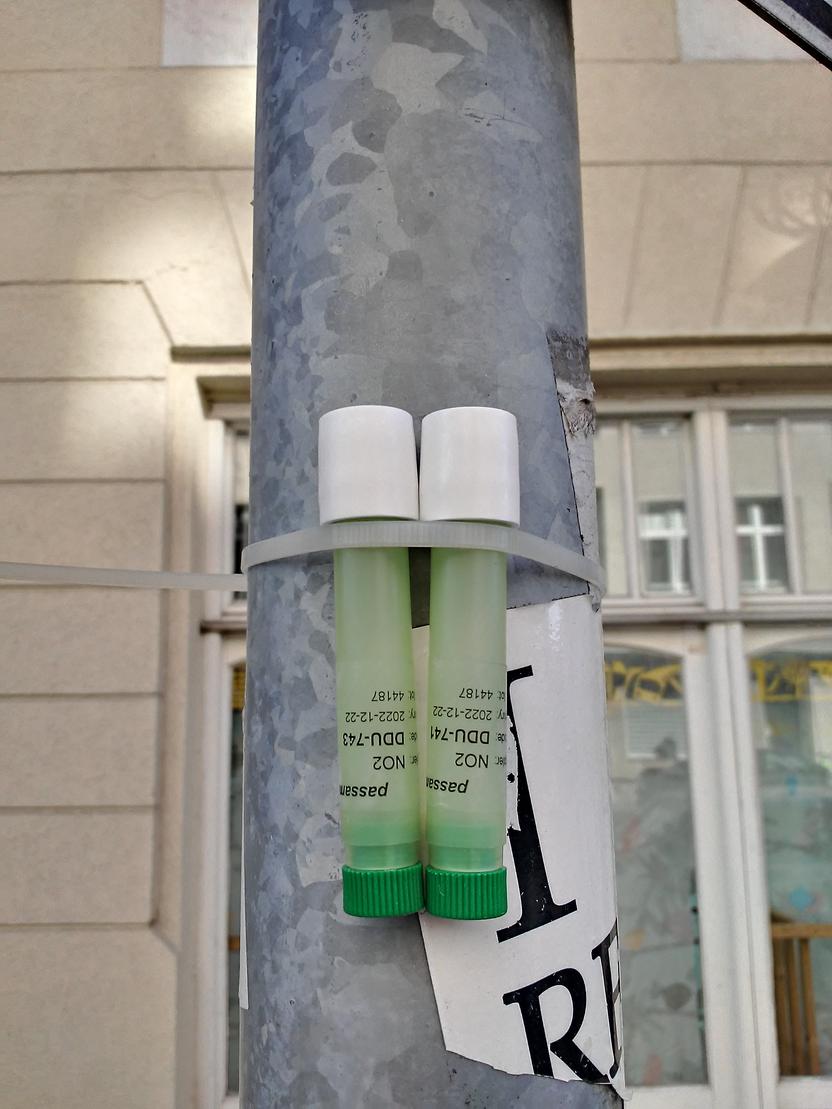Methodology
The "Pop-up Republik: Mobilitätswende Berlin" project ("Pop-up Republic: New Mobility Berlin") examines measures for transforming transport in terms of their impact. Not only environmental parameters such as local air quality play a role here, but also data on bicycle and pedestrian traffic volume. The latter is crucial in order to be able to draw conclusions on the potential for reducing greenhouse gases. If no public data is available, our own measurements and counts are carried out.
The selected study areas in five Berlin districts cover the three main measures being investigated in the project: Cycle lanes, parking space management and speed reductions – or a combination of these measures. Assuming an improved situation that has been proven as a result of the measures undertaken, the aim is to strengthen their acceptance and implementation throughout Berlin.
Data collection
Motor vehicle traffic
The number, composition and speed of motor vehicles on Berlin's roads are measured at over 240 locations using infrared detectors known as Traffic Eye Universals (TEUs). Most of the study areas were chosen so that data from TEUs is available. This data is collected and published by the Berlin Traffic Information Centre. On roads without suitable traffic detectors, some data from a traffic volume model (IQ Mobility) was made available to the project. This models hourly traffic volumes for all main roads on the basis of the Berlin traffic model (as at 2014) and the TEU detectors. The hourly vehicle data from the TEU detectors and the traffic model were averaged monthly and adjusted for outliers. Appropriate periods before and after the introduction of the respective measure were considered and compared for the analysis. Divergent methodologies are explained in the respective study reports.
Bicycle traffic
The Berlin SenUMVK operates a total of 19 automatic permanent counting stations that continuously and selectively record cycling traffic. In addition, bicycle traffic volumes are manually recorded on selected days and for specific road sections. Dynamic cycling data must be used in order to record the remaining roads. This data is provided by the Strava Metro mobility platform.
It should be noted that users of digital sports apps are a rather homogeneous group. However, Strava offers the advantage of complete spatial coverage and provides mobility data retrospectively for several years. The data collected by Strava was correlated with the count data from the automatic permanent counting stations. According to this, Strava covers about 1 percent of all cycling trips – and the trend is rising. The proportion of recorded cycling movements was extrapolated to the data of all study areas on a yearly basis in order to reflect actual increases in cycling traffic and not an increased use of the Strava app.
The data, which is collected on a daily basis, is averaged monthly to reduce weekday and weather-related fluctuations. Comprehensive data is always evaluated before and after the implementation of a traffic measure. In order to compensate for seasonal fluctuations, the entire period from 2019 to 2021 is taken into account rather than just a few weeks or months. In this way, in addition to average values over longer periods, individual months can also be compared with the equivalent months of the previous year.
Nitrogen dioxide

The project focuses on nitrogen dioxide (NO2), as it is the air pollutant that is emitted to a large extent by local traffic. In the study areas where official measurements by the Berlin Senate Department for the Environment, Urban Mobility, Consumer Protection and Climate Action (SenUMVK) are available, this data is evaluated.
The official data is supplemented by measurements from universities and research institutes (e.g. IASS Potsdam - Institute for Advanced Sustainability Studies) as well as our own NO2 measurements using passive samplers – a procedure that is also common practice for authorities in Germany and other EU member states. The accuracy is proven and complies with EU regulations. The passive samplers can be used to determine the average NO2 concentration in the ambient air over a certain period of time. For the measurement, the samplers are mounted on a road sign, a lamppost or a comparable location near the road. The European Air Quality Directive 2008/50/EC provides guidance for the precise positioning of the measuring tubes. The maximum exposure period for passive samplers is four weeks. They are exchanged for longer measurement periods.
As the NO2 levels are subject to monthly fluctuations depending on temperature and weather, periods of at least two months before and after the introduction of the measure are considered. In order to make a reliable statement about the impact of a measure on nitrogen dioxide pollution, our own measurement results are additionally compared with the values from the official measuring stations.